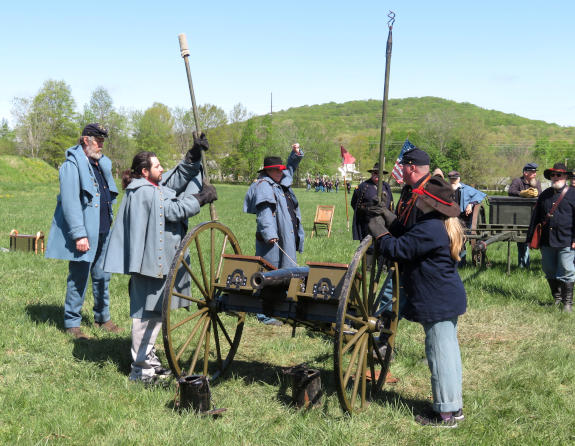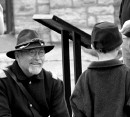FLAG RESEARCH IDENTIFIES ORIGINS OF 17th MISSOURI COLORS
by Randy Baehr

The Turner Brigade has long been interested in having a proper period national colors to fly at reenactments, but the determination of the correct pattern for our group has been impeding progress in this direction thus far. However, research done by Brigade member Philip Hinderberger, a historian of the 17th Missouri Infantry, suggests an answer to this question.
The Missouri State Museum at the Missouri State Capitol in Jefferson City holds an extensive collection of Missouri Civil War flags, including one identified as belonging to the 17th Missouri. A few of the flags have already been restored and are viewable on request of the curator of collections, L.T. Shelton. The 17th’s colors have been stored furled since around the turn of the century but were reviewed in a condition survey in 1998 so an estimate of the restoration cost could be made. Mr. Hinderberger obtained copies of the survey document and of a drawing of the flag. Based on the features of the flag, he has identified the manufacturer as Hugh Wilkins of Louisville, Kentucky, who produced flags for units of several states.
Whereas the standard dimensions of the national colors were 72″ on the staff and 78″ on the fly, the 17th ‘s colors were 56″ on the staff and an estimated 66″ on the fly (much of the fly edge is missing). Stripes were 4¼” wide and made of silk ribbon, which means that the edges on each stripe were finished edges, not cut and folded over. It is not clear whether the stripes were sewn overlapping or with the edges butted together, but they were hand sewn with silk thread. There are no battle honors or regimental name printed on the stripes as was common. The canton is 30″ on the staff and 33½” on the fly, with a horizontal seam at 23″ from the top of the canton. The 34 five-pointed stars are painted on in gold pigment and are 2¾” high. The flag is not sleeved like standard colors, but was attached onto the staff with brass screw knobs and brass tacks. It is also not fringed like standard colors, but does have red and white cords with tassels. No finial is described for the staff.
Mr. Hinderberger identified the maker from the following description found in Flags of the American Civil War 2: Union, by Philip Katcher, part of the Osprey Military Men-at-Arms Series:
Hugh Wilkins, Louisville, Kentucky, produced national colours for Kentucky troops and, apparently, units from Illinois, Indiana, and Ohio as well. These were unusual in that a light or sky blue was used for the square cantons. The gold stars were arranged in six horizontal rows, five in the top and bottom rows and six in the other rows.
The condition survey notes that the colors on the flag are “faded” (which may actually be light blue in the canton), and the Wilkins star pattern, not common on other national colors, matches that of the 17th’s colors.
Mr. Hinderberger has already raised and donated $550 towards the $5,600 estimated cost of the 17th’s colors restoration. Since then the Baden-Wurttemberg Museum in Germany has offered to fund the complete conservation of the 17th’s colors so the museum may have them on loan to display in an exhibit honoring German-Americans from Baden-Wurttemberg who served in the 17th and other Union regiments during the Civil War. The loan would be for an initial five-year period, with an option for renewal. Mr. Hinderberger has formally suggested to the State that the flag be returned to the Capitol for the observance of the Sesquicentennial Anniversary of the American Civil War in 2011.
This article was originally published in the January-February 2002 issue of The Shrapnel, the newsletter of the Turner Brigade. For information about The Shrapnel, contact Sheila Porter, Editor.



